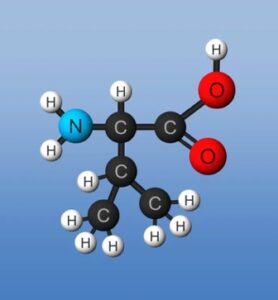The rise of protein
You don’t have to look at too many food or beverage products these days to find ones announcing the protein content on the packaging. Whether it’s naturally occurring or has been added, protein seems to be a featured ingredient that more and more products are including and promoting. It is a trend that is driven by, and in response to, consumer demand. It’s gone beyond power bars and special drinks, to where there seems to be a protein-rich version of everything from ice cream, pasta and cereal, to popcorn, chips and cookies. The popularity of protein enhanced foods and drinks is directly related to changing dietary goals, and the association of protein with benefits for muscle development, weight management and general health.
Diet trends have come and gone over time. In the 1980s and 90s, low-fat diets saw the most popularity, followed by low-carb diets in the early 2000s. Recent times have seen the rise of vegan, keto and gluten-free preferences. The origins of protein’s popularity can be traced to the fitness and bodybuilding world, where it has been promoted for decades as a key supplement to build and repair muscle. Wellness and sports nutrition has obviously now extended into more mainstream awareness, with protein emerging as a key macronutrient. This is evidenced by the fact that food companies have quadrupled their protein product offerings in the last 10 years, and there has been an average 70% increase in protein intake since 2022, with an expected growth rate of 8% per year. Protein is now seen as a key component for overall balanced health.
What exactly is protein?




Protein is one of three macronutrients, along with fats and carbohydrates, that the body needs for energy and to sustain itself. If we view the food we consume as fuel for a fire, metaphorically speaking, then protein is the long lasting fuel, like a log on the fire, as opposed to fast burning, kindling-type fuel like carbs.




What does protein do for you?
- Muscle growth and repair. Protein supplies the necessary amino acids required for these processes, which also help support lean body weight.
- Weight control. When compared to the other two macronutrients, carbs and fats, protein is shown to induce more satiety, which leaves you feeling fuller for longer. The result is often a lower overall caloric intake, helping with weight loss on maintenance.
- Metabolic support. Increased protein intake is linked to increased thermogenesis, meaning your body burns more calories digesting protein than it does with other macronutrients.
- Blood sugar control. Protein slows down the absorption of carbohydrates, thus helping control blood sugar levels, making it ideal for those with diabetes or prediabetes.




The other diet trend - Probiotics


Hippocrates was right
The development of probiotics
Sources of probiotics


- Yogurt – Look for “live and active cultures” on the label.
- Kefir – This is a tangy, fermented milk that is rich in diverse strains
- Sauerkraut – A fermented cabbage (unpasteurized versions are best).
- Kimchi – Spicy, fermented Korean vegetable dish.
- Miso – This is a Japanese seasoning made from fermented soybeans.
- Kombucha – This is a fizzy, tangy, fermented tea.




The convergence of protein and probiotics


SOURCES
https://retailconsumerprofessionals.com/content-library/article/Pmxbdv/wellness-watch-the-high-protein-trend-what-it-means-for-retailers
https://www.cargill.com/2025/consumers-are-seeking-more-protein-for-health-and-taste-in-2025
https://news.fsu.edu/news/expert pitches/2025/05/08/the-protein-craze-florida-state-university-expert-explains-the-why-behind-a-high-protein-diet/
https://www.allrecipes.com/protein-trend-2025-11727473
https://medlineplus.gov/genetics/understanding/howgeneswork/protein/
https://www.genome.gov/genetics-glossary/Amino-Acids
https://www.healthline.com/nutrition/essential-amino-acids
https://academic.oup.com/cid/article-abstract/60/suppl_2/S85/379032?redirectedFrom=PDF
https://journals.lww.com/jcge/fulltext/2016/11001/probiotics_history.3.aspx
https://pubmed.ncbi.nlm.nih.gov/25576593/
https://pmc.ncbi.nlm.nih.gov/articles/PMC4045285/
https://www.muscleandfitness.com/supplements/diet-dilemma-should-you-be-taking-probiotics/




